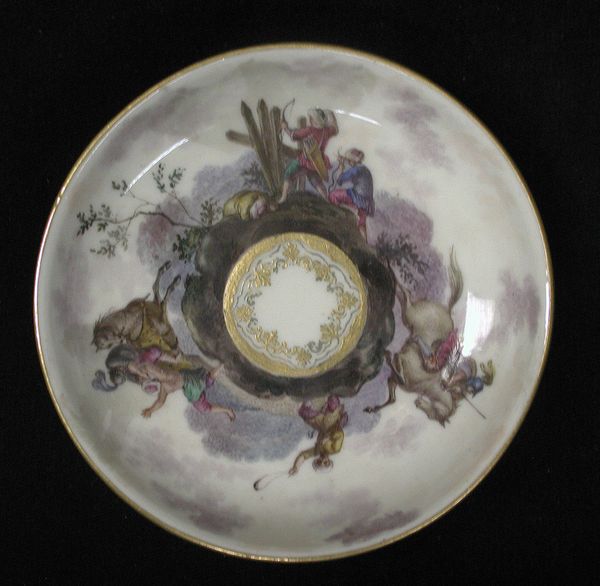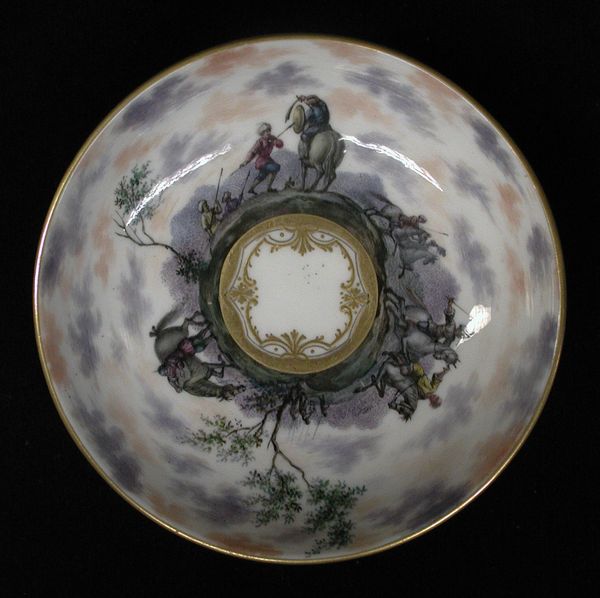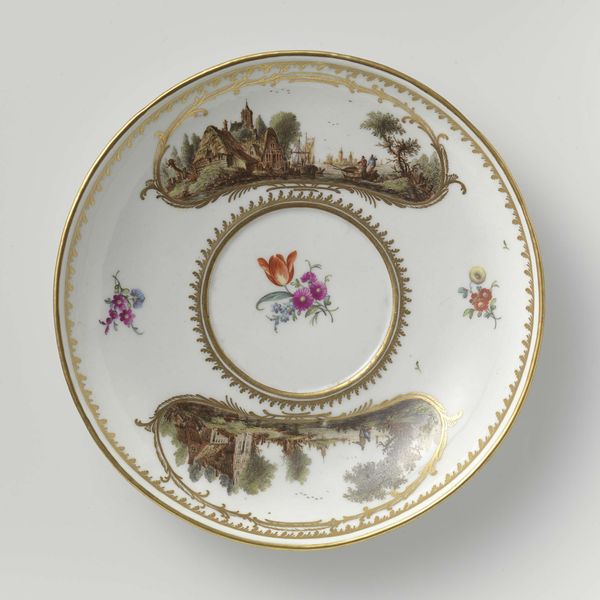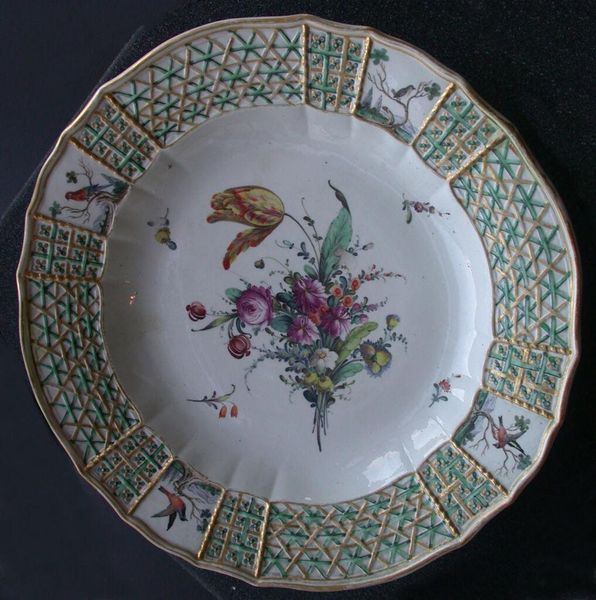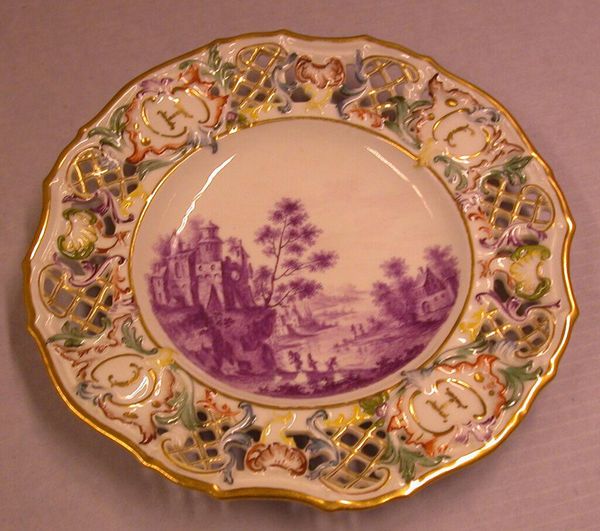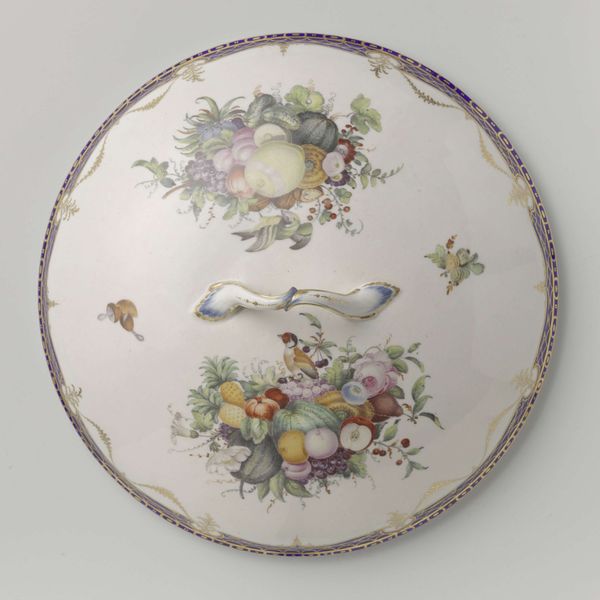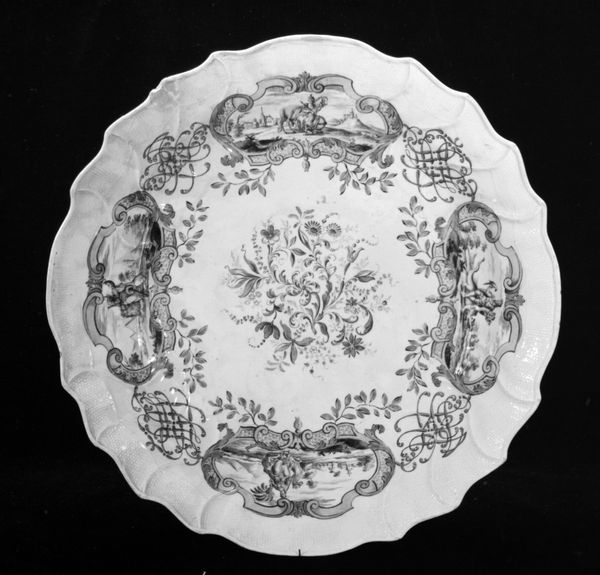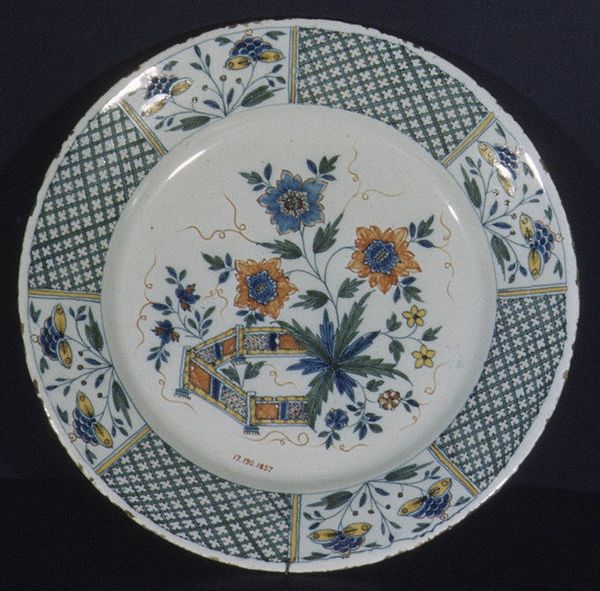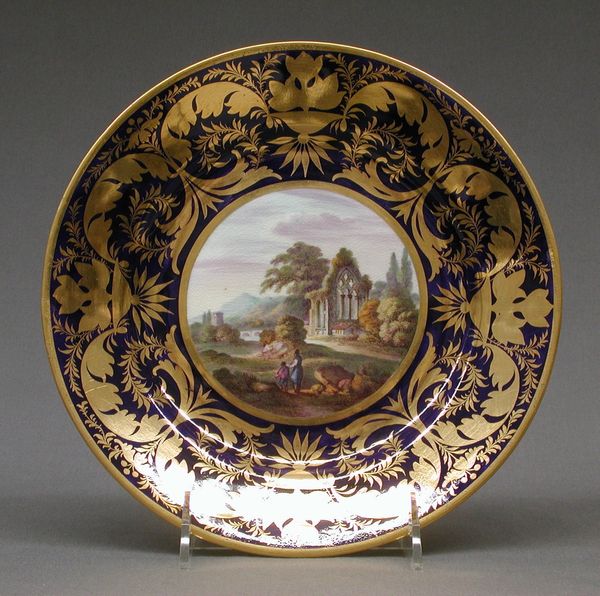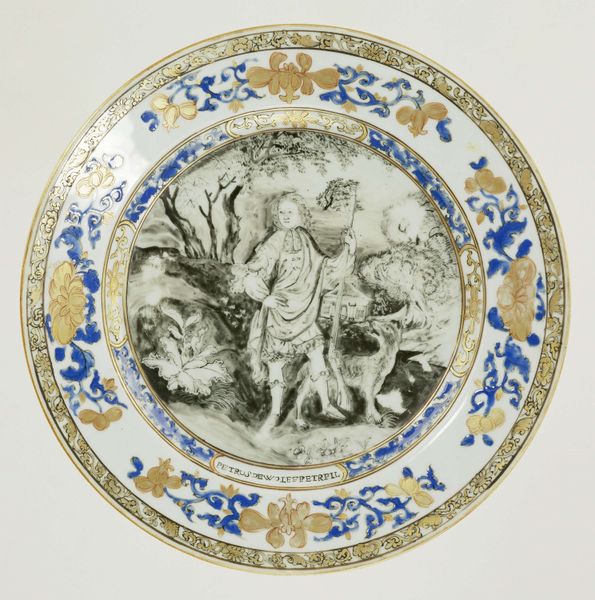
Saucer (part of a service) 1743 - 1759
0:00
0:00
tempera, painting, ceramic, porcelain, sculpture
#
tempera
#
painting
#
ceramic
#
porcelain
#
figuration
#
sculpture
#
ceramic
#
earthenware
#
genre-painting
#
decorative-art
#
decorative art
#
rococo
Dimensions: Diam. 5 1/16 in. (12.9 cm.)
Copyright: Public Domain
Curator: Oh, what a fierce little world on such a delicate canvas! I feel like I’m peering into a battle scene from a dream. Editor: Indeed! What you're looking at is a porcelain saucer, part of a service, created by the Capodimonte Porcelain Manufactory between 1743 and 1759. It's currently housed here at the Metropolitan Museum of Art. Curator: Mid-18th century, you say? That Rococo flair definitely shines through! There’s this chaotic energy, like a tempest bottled into a teacup. Is it classical? A hunt perhaps? The figures are so lively, so embroiled... I almost expect to hear tiny shouts of war. Editor: Precisely. The manufactory, initially established by King Charles VII of Naples, sought to rival the famed Meissen porcelain. This saucer exemplifies the Rococo penchant for dynamic compositions and narrative detail. The painted scene reflects genre painting’s influences featuring scenes of hunts. These are celebrations, not just of artistry, but of the King’s vision. Curator: Genre paintings… Of course! But look at how tightly the drama's framed. Each character vying for a sip of attention! A hunting scene transformed onto porcelain, a little violent perhaps, for enjoying afternoon tea! Editor: The hunting scenes, rendered in tempera on porcelain, also mirror the theater of courtly life, reinforcing elite social structures of the era. Serving wares like these reinforced a certain worldview, elegance but control as well. Curator: It's so interesting to consider art, and these porcelain objects, which often get relegated to "decorative", as tiny little stages, presenting power but intimacy at the same time. And the golden, filigree frame around the center… it's almost precious in a comical way. Editor: Precisely, the very fact it's a functional object elevates it beyond mere decoration. It makes it interactive with consumers, and it also highlights class in an approachable way. Curator: And how does that impact our sense of narrative itself… all these battling figures encased in delicate material... it's gorgeous yet kind of sinister! It invites storytelling, but holds you captive. Editor: Well, considering its past, one has to wonder how our consumption of it shapes how we understand it. Thank you for exploring those ideas with me. Curator: Thank you! Every time, art never fails to give me insight and new reflections on old stories.
Comments
No comments
Be the first to comment and join the conversation on the ultimate creative platform.
